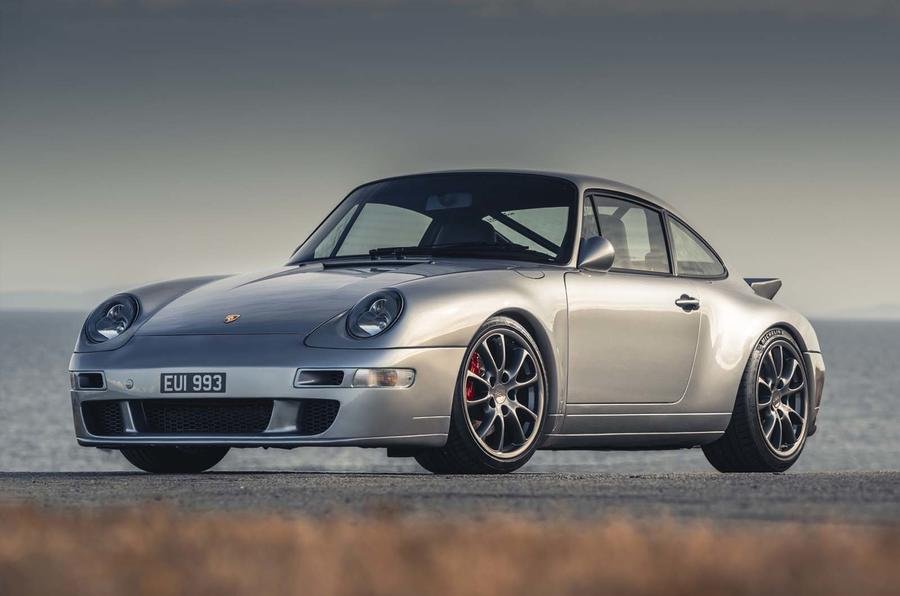The Porsche 911 series has long been revered in the automotive world for its distinctive design, remarkable performance, and the driving experience it offers. Among the various iterations of this iconic series, the Porsche 911 (993), produced between 1994 and 1998, holds a special place in the hearts of enthusiasts and collectors. Known for being the last air-cooled 911, the 993 represents a pivotal moment in Porsche’s history, blending traditional elements with modern advancements. This article delves into the history, design, performance, and lasting legacy of the 993, highlighting why it remains a cherished model to this day.
Historical Context
The Porsche 911 (993) emerged during a time of significant transformation for the German automaker. The early 1990s were challenging for Porsche, as the company faced financial difficulties and a need to modernize its lineup to compete with increasingly advanced rivals. The 993 was introduced as the successor to the 964, with a mission to retain the quintessential 911 charm while incorporating technological improvements to meet contemporary standards.
The 993’s development began in the late 1980s under the leadership of Porsche’s then-Chief Engineer, Dr. Ulrich Bez. The goal was to create a car that not only honored the legacy of the 911 but also addressed criticisms of previous models, such as handling quirks and build quality issues. The result was a car that balanced tradition with innovation, offering an evolutionary leap forward for the 911 series.
Porsche 911 (993); Design and Aesthetics
One of the most striking aspects of the 993 is its design. While maintaining the classic silhouette that defined the 911, the 993 introduced several refinements that modernized its appearance. The bodywork, designed by Tony Hatter, featured smoother lines, integrated bumpers, and wider wheel arches, giving the car a more aggressive and aerodynamic stance. The front end was lower and more streamlined, thanks to a new suspension setup, while the rear end showcased revised taillights and a retractable rear spoiler.
The interior of the 993 also saw improvements, with higher-quality materials, better ergonomics, and updated technology. The dashboard layout was more driver-focused, with clear instrumentation and intuitive controls. Leather upholstery, power-adjustable seats, and air conditioning were among the features that enhanced the cabin’s comfort and luxury, making the 993 a more appealing choice for daily driving.
Performance and Engineering
The heart of the 993 was its air-cooled flat-six engine, a hallmark of the 911 lineage. The 993 initially came with a 3.6-liter engine producing 272 horsepower, which was later increased to 285 horsepower in the 993 Carrera. The engine featured a new dual-flow exhaust system, improved air intake, and revised internals, resulting in better performance and reliability compared to its predecessors.
One of the most significant engineering advancements in the 993 was the introduction of the multi-link rear suspension, known as the “Weissach” axle. This setup drastically improved the car’s handling characteristics, reducing the oversteer tendencies that had plagued earlier 911s. The 993’s suspension provided a more planted and confident feel, making it a joy to drive on both twisty roads and high-speed straights.
The 993 also saw the introduction of the all-wheel-drive system in the Carrera 4 and Carrera 4S models, enhancing traction and stability. The 993 Turbo, launched in 1995, took performance to another level with its twin-turbocharged 3.6-liter engine producing 402 horsepower, making it one of the fastest cars of its era. The Turbo model also featured wider rear fenders, a fixed rear wing, and larger brakes, further distinguishing it from the rest of the lineup.
Variants and Special Editions
The 993 offered a range of variants and special editions, catering to different preferences and driving experiences. The Carrera and Carrera S were the entry-level models, available in coupe and cabriolet forms. The Carrera 4 and Carrera 4S provided all-wheel-drive alternatives, offering better traction in various driving conditions.
For those seeking the ultimate in performance, the 993 Turbo and Turbo S were the pinnacle. The Turbo S, introduced in 1997, was a limited-production model with even more power, upgraded aerodynamics, and unique styling cues, making it highly coveted among collectors.
Another notable variant was the 993 RS, a lightweight, track-focused model inspired by Porsche’s racing heritage. The RS featured a stripped-out interior, aggressive weight-saving measures, and a more powerful naturally aspirated engine, making it a purist’s dream.
Porsche 911 (993); Legacy and Impact
The Porsche 911 (993) is often regarded as one of the greatest iterations of the 911 series, and its legacy continues to influence the brand today. Its combination of classic air-cooled charm and modern engineering advancements set a benchmark for subsequent 911 models. The 993’s success helped stabilize Porsche’s finances and laid the groundwork for future innovations.
Collectors and enthusiasts value the 993 for its unique blend of tradition and technology. Its status as the last air-cooled 911 adds to its allure, making it a sought-after classic in the automotive world. Well-preserved examples command high prices in the collector car market, reflecting the enduring appeal of the 993.
Conclusion
The Porsche 911 (993) represents a pivotal chapter in the storied history of the 911 series. Its timeless design, improved performance, and innovative engineering made it a standout model. The car continues to captivate enthusiasts and collectors alike. As the last air-cooled 911, the 993 holds a special place in the hearts of Porsche fans, embodying the perfect balance between tradition and progress. Its legacy is a testament to Porsche’s ability to evolve while staying true to its roots, ensuring that the spirit of the 911 lives on in every generation.
